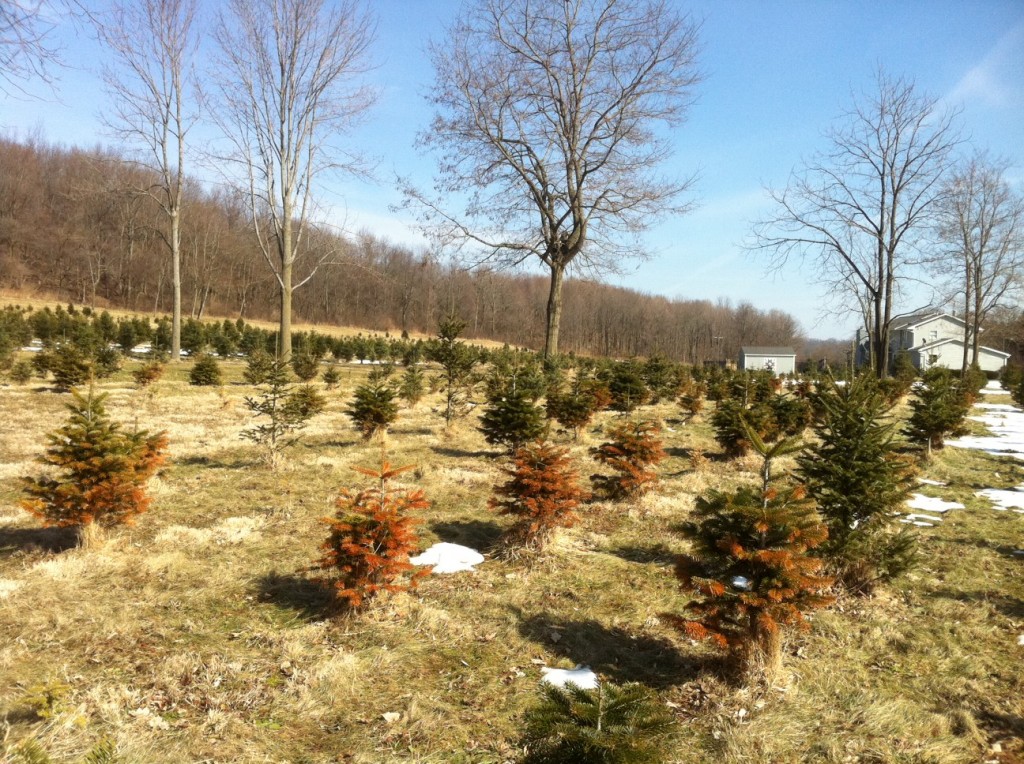
It’s warming up, so maybe we really have weathered the storms. But hey, why is my evergreen turning brown now? Perhaps because of winter burn or winter injury. There are 2 ways this can happen. During cold and windy winters, trees lose more moisture from their needles than normal. And, there’s no way for the roots to take up water when the ground is frozen, so the needles could dry out and die. Because even though they’re dormant, trees use and lose water — even in winter.
Wild temperature swings can also injure trees. On a sunny day — particularly on the south side — the tree actually warms up. When the sun sets, it gets cold FAST and that rapid temperature change can damage buds and needles.
If you had enough snow to cover the lower branches you might notice that the needles are brown only above that snow line. Snow protects the needles from water loss and keeps the branches from warming up.
What else can cause winter injury? Needle diseases like needlecasts can make needles more susceptible to drying. And de-icing salts on your street can, as cars speed by creating airborne salt spray, damage needles and buds.
What to do? Hoping we don’t ever have another cold winter may not be enough! For this year, wait to prune brown branches until after bud break so you know if branches are actually dead or merely have needle damage.
For next year, water your trees well — but don’t overwater them — until the ground freezes. Mulch can help hold moisture in the soil. Shielding trees from the wind can help. For the long term, make sure the trees you choose are listed for your hardiness zone and plant the most tender specimens in a protected location.